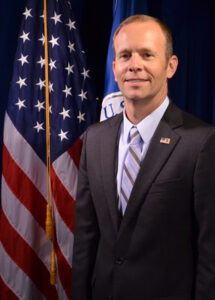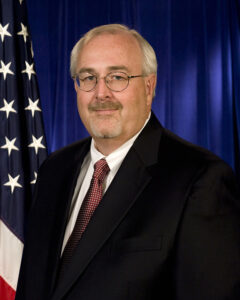FEMA Administrator Brock Long: Time to hit the reset button on resiliency
FEMA Administrator Brock Long has it right
 FEMA Administrator Brock Long testified before the House Appropriations Committee on November 30, 2017 and what he said was a game changer. Here are some key points he made:
FEMA Administrator Brock Long testified before the House Appropriations Committee on November 30, 2017 and what he said was a game changer. Here are some key points he made:
- “While each year the hurricane season comes to an end on November 30, the lessons from the response and recovery operations that we are performing this year, under incredibly difficult circumstances, will transform the field of emergency management forever.” (Written testimony)
- “It is important to point out that an optimal response and recovery process should be federally supported, state managed and locally executed. Each level of government has a very critical role to play and we need to continue to define what the responsibilities are and what the target capabilities should be.” (Time: 21:17)
- “In the case of Puerto Rico,they were hit by two major hurricanes in rapid succession which created a diminished capacity. Not only were their responders now disaster survivors, but also the ability to respond was also compromised. That puts FEMA as the primary responder and pretty much the first responder, which is never a good situation. When FEMA is the first and primary responder, and the only responder for many weeks, we are never going to move as fast as anybody would like.” (Time: 21:31)
- “We have to do more pre-disaster mitigation. Pre-disaster mitigation is the key to becoming more resilient and reducing disaster impact. We have to ensure that state and local governments – like Texas and Florida are the examples – have their own life sustainment commodities capabilities and the federal government is not shouldering the entire burden.” (Time 23:41)
- “The key resiliency is held at the local level of government…it’s going to have to be a whole community effort on the pre-disaster side.” (Time: 1:01:27)
- “Each citizen is responsible for their own individual preparedness. We do not have a true culture of preparedness in this country and we need to hit the reset button and look at how we partner with the Department of Education and give people critical skills…Many times citizens are the first true responder.” (Time: 1:36:49)
- “Externally, for the entire country, I think that survivable communications is something we have to address with the private sector. We become more and more vulnerable every day as we go to digital networks. When you don’t have redundant systems or mitigated systems designed to handle all hazards, then it creates panic as we’ve seen…Internally, fix the NFIP. Do more pre-disaster mitigation.” (Time 2:08.55)
“We do not have a true culture of preparedness in this country”
FEMA Administrator Brock Long summed it up with this simple statement. So what is the present culture?
- Citizens: In my experience, most citizens do not think about emergency preparedness. They may run to the store before the storm hits and buy batteries and bottled water (if there is any left) but absent prior warning, most citizens have a nominal (at best) amount of food and preparedness supplies. In other words, they expect to be rescued.
- Local governments: Many, if not most, local governments assume the availability of outside resources (state or federal) in a disaster. This is based on past disasters where outside resources have always been available. In other words, they expect to be rescued.
After watching current FEMA Administrator Brock Long’s testimony, I watched a recent presentation by former FEMA Administrator Craig Fugate.
Former FEMA Administrator Craig Fugate weighs in
 In his presentation, Craig Fugate spoke about what he calls “the 7 deadly sins of emergency management.” (I recommend you watch his presentation, linked below, to get the full impact of his points.)
In his presentation, Craig Fugate spoke about what he calls “the 7 deadly sins of emergency management.” (I recommend you watch his presentation, linked below, to get the full impact of his points.)
- We plan for what we are capable of responding to
- We plan for our communities by placing the hard to do in an annex (elderly, disabled, children, pets)
- We exercise to success
- We think our emergency response system can scale up from emergency response to disasters
- We build our emergency management team around government, leaving out volunteer organizations, the private sector, and the public.
- We treat the public as a liability
- We price risk too low to change behavior, as a result, we continue to grow risk
Taken together, clear messages emerge
Mr. Long made several comments that we need to focus more on pre-disaster mitigation and that resiliency is at the local level. Most importantly “it’s going to have to be a whole community effort on the pre-disaster side.”
Some of Mr. Fugate’s “sins” also apply, particularly that “we build our emergency management team around government, leaving out volunteer organizations, the private sector, and the public” and that “we treat the public as a liability.”
Both are saying that resiliency takes a village.
Also, very worthy of note are two other of Mr. Fugate’s “sins”: “We plan for what we are capable of responding to” and “we exercise to success.” (See my GridEx post for an example of this.) This theme is echoed by Mr.Long’s comments about FEMA ending up as the first responder – which it was never meant to be.
The message is that at a local level, we need to re-boot some form of civil defense. In order to have more resilient and prepared communities, the local government cannot do it alone. developing a local non-profit civil defense organization is a resource multiplier.
Mr. Long says that the lessons from the response and recovery operations this year will transform the field of emergency management forever. The largest part of this transformation must be at the local community level.
Watch the Hearing (FEMA Administrator Brock Long’s testimony begins at 17 Minutes):
Former FEMA Administrator Craig Fugate’s fascinating and relevant presentation: The 7 Deadly Sins of Emergency Management:
